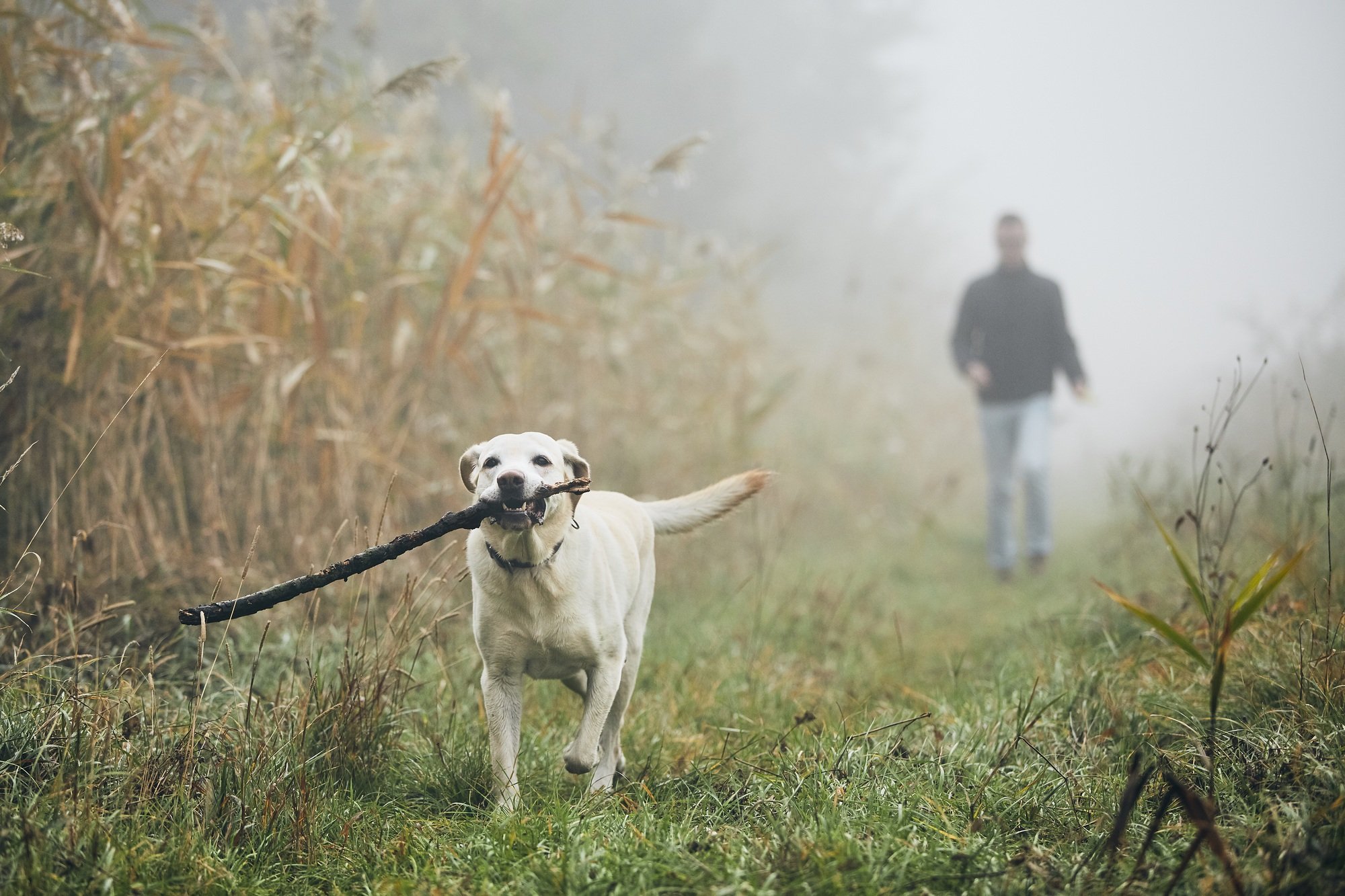Key Takeaways

- Growing Demand: The rise in pet ownership and lack of regular walks for many dogs creates a significant market opportunity for your dog walking business.
- Market Research: Assess the local demand, analyze competitors, and understand your target audience to position your services effectively.
- Service Definition & Pricing: Clearly define your dog walking services, establish competitive pricing based on market rates, and consider additional offerings like pet sitting or grooming.
- Business Plan Essentials: Create a comprehensive business plan that outlines your goals, services, pricing, marketing strategies, and potential challenges to guide your business development.
- Establish Online Presence: Build a user-friendly website and utilize social media for marketing. Engage with clients through online content and showcase testimonials to attract new customers.
- Professionalism and Client Relations: Maintain professionalism in your service delivery, communicate effectively with clients, and foster strong relationships to encourage referrals and business growth.
If you love dogs and enjoy spending time outdoors, starting a dog walking business could be the perfect venture for you. With pet ownership on the rise, many dog owners are looking for reliable and trustworthy individuals to help care for their furry friends. This growing demand means there’s a fantastic opportunity for you to turn your passion into profit.
Launching your own dog walking business doesn’t require a hefty investment or extensive experience. All you need is a love for animals, some basic planning, and a few key strategies to stand out in the market. Whether you’re looking to make some extra cash or build a full-time career, this guide will walk you through everything you need to know to get started on the right paw.
How to Start a Dog Walking Business

Starting a dog walking business requires several essential steps to ensure success. Follow these steps to establish your venture:
- Research local market demand: Assess the demand for dog walking services within your community. Identify your competitors, their pricing, services offered, and areas served. This information helps you position your small business effectively.
- Define your services: Identify what services to offer, such as solo walks, group walks, or additional services like pet sitting or grooming. Clearly define the services provided to attract potential clients.
- Set your pricing: Establish competitive pricing for your services based on the local market rate. Evaluate factors such as the duration of the walk and the number of dogs. For example, you might charge $15 for a 30-minute solo walk and $25 for a one-hour group walk with three dogs.
- Create a business plan: Draft a straightforward business plan outlining your goals, services, pricing, marketing strategies, and financial projections. This document provides a roadmap for growing your small business.
- Obtain necessary permits: Check local regulations regarding pet care services. Some areas may require permits or licenses to operate. Fulfill these requirements to ensure compliance.
- Establish your online presence: Create a user-friendly website and active social media profiles. Share engaging content related to dog care and walking tips. Use these platforms to attract clients and showcase testimonials from satisfied pet owners.
- Promote your business: Utilize local advertising methods, such as flyers and community boards. Network in local pet stores or veterinary clinics to connect with potential clients. Offer introductory discounts to encourage first-time customers.
- Build relationships with clients: Foster strong relationships with pets and their owners. Consistently provide quality service to build trust and encourage referrals. Satisfied clients significantly contribute to the long-term success of your dog walking business.
- Maintain professionalism: Arrive on time for walks, communicate promptly with clients, and ensure the safety and well-being of the dogs. Professionalism enhances your reputation and supports business growth.
- Continuously gather feedback: Regularly seek client feedback to identify areas for improvement. Adapt your services based on this input to better meet their needs and enhance client satisfaction.
By following these steps, you establish a solid foundation for your dog walking business and position it for growth.
Researching the Market

Researching the market is vital in launching a successful dog walking business. This step ensures you understand the demand, target audience, and competitive landscape.
Understanding the Demand
The demand for dog walking services* is robust. Factors driving this demand include an increase in pet ownership and a rise in spending on pet services. In the U.S., approximately 89 million pet dogs exist, with 40% of dog owners not regularly walking their pets. This gap presents a significant opportunity for your small business.
Identifying Your Target Audience
Identifying Your Target Audience requires consideration of location and demographics. Important aspects include assessing pet ownership rates and community needs. Focusing on neighborhoods with a high concentration of dog owners increases the potential client base. Understanding the types of services required, such as solo or group walks, aligns offerings with customer preferences.
Analyzing Competitors
Analyzing Competitors critical in determining your market position. Investigate local dog walking services to ascertain pricing structures and service offerings. Identify saturated areas and unmet needs within the market. This analysis helps craft competitive pricing strategies and unique service packages that differentiate your small business from others.
Creating a Business Plan

Creating a comprehensive business plan lays the foundation for your dog walking business. Several key components must be addressed to ensure clarity and direction.
Setting Goals and Objectives
Setting clear goals and objectives provides a roadmap for your small business. Specify short-term and long-term goals along with measurable outcomes. For example, aim to secure five regular clients within the first three months and expand services to include grooming within the first year. Specific goals help track progress and maintain focus while guiding decision-making.
Defining Services Offered
Defining services offered showcases your unique offerings to potential clients. Consider including standard dog walking, group walks, or specialized services such as extended stays and day boarding. If you offer additional services like training or grooming, clearly outline these in your plan. A diverse service portfolio appeals to a wider audience and addresses various customer needs.
Establishing Pricing Structure
Establishing a competitive pricing structure ensures your services are attractive and profitable. Research local competitors to determine standard rates for dog walking services. Consider pricing strategies such as per walk or monthly packages that provide flexibility to clients. For instance, charge $15 for a 30-minute walk and $120 for ten walks prepaid. A well-researched pricing structure enhances your value proposition and sets your small business up for success.
Legal Considerations

Addressing legal considerations plays an important role in starting a dog walking business. Ensuring compliance protects you and your venture.
Registering Your Business
Register your business to operate legally. Choose an appropriate business structure like sole proprietor, partnership, or Limited Liability Company (LLC). An LLC offers better liability protection but involves more time and expenses for setup and maintenance. If your business name differs from your personal name, register a DBA (Doing Business As) with your local authority.
Obtaining Necessary Licenses and Permits
Obtain necessary licenses and permits based on local regulations. Some cities or counties require specific permits for dog walking services. Check local laws to confirm requirements, ensuring compliance avoids costly fines and legal issues. Common permits include business operation licenses and pet-related permits, both of which may vary by location.
Understanding Insurance Options
Understanding insurance options protects your business assets and personal liability. Liability insurance covers potential claims arising from accidents, injuries, or property damage during dog walks. Consider pet sitting insurance for added protection in case of injuries to pets in your care. Assess different coverage options and choose a policy that fits your business needs, ensuring peace of mind as you grow your small business.
Marketing Your Dog Walking Business

Successful marketing enhances visibility for your dog walking business. Focus on creating an effective online presence and engaging with your community.
Building an Online Presence
- Create a Website: Develop a user-friendly website that features important information about your services. Include sections for testimonials from satisfied clients, service descriptions, and contact details. Ensure the website is mobile-optimized for accessibility.
- Utilize Social Media: Post regular updates on Facebook, Instagram, and Twitter. Share engaging photos and videos of walks, pets, and dog care tips. Maintain consistent interactions with followers to build community trust. Implement promotions, like referral bonuses or discounts, to encourage new clients.
- Harness Online Advertising: Use targeted online advertising campaigns on social media platforms and Google Ads to reach local dog owners. Specify your service area in ads to attract relevant clientele.
- Engage in Local SEO: Optimize your online content with local keywords to enhance search engine rankings. Include phrases such as “dog walking services in [Your City]” in your website copy and social media profiles.
- Join Online Directories: List your dog walking business on relevant online directories, such as Yelp and local pet services websites. This increased visibility helps potential clients find your services easily.
- Encourage Reviews: Request satisfied clients to leave reviews on platforms like Google and Facebook. Positive reviews build credibility and encourage prospective customers to choose your services.
Implement these strategies to effectively market your dog walking business and attract clients eager for reliable and caring dog walking services.
Developing Flyers and Business Cards

Design and Content:
Crafting effective flyers and business cards requires an engaging design and concise content. Ensure each flyer contains a visually appealing layout with a clear message that highlights your dog walking services. Feature essential information such as your contact details, service offerings, and pricing. Incorporate professional images of dogs and include your logo if available. Customize the text to showcase any unique selling points or promotions that may attract potential clients.
Distribution:
Strategic distribution enhances visibility for your dog walking business. Place flyers in high-traffic areas where pet owners congregate, such as dog parks, pet stores, veterinary clinics, local cafes, and community centers. Select distribution points based on your target audience to maximize reach. For example, during summer months, consider focusing on flyers that promote walking services for active dogs.
Networking with Local Pet Owners

Networking with local pet owners enhances your dog walking business presence and fosters trust. Consider these steps to effectively connect with pet owners in your community.
- Attend Local Pet Events: Participate in dog shows, adoption events, and community pet fairs. Engaging with pet owners in person creates opportunities to introduce your services directly.
- Join Online Communities: Become a part of local pet-related social media groups. Actively contribute by answering questions and sharing advice to strengthen your visibility and credibility.
- Partner with Pet Businesses: Collaborate with local pet stores, veterinarians, and groomers. Establishing referral relationships allows mutual benefits that expand your client base.
- Organize Meet-Up Events: Host local dog walking meet-ups in parks. Providing a casual environment encourages pet owners to learn about your services and connect with you.
- Offer Free Trials: Provide free introductory walks for new clients. Demonstrating your skills and building rapport showcases your commitment to quality dog care.
- Create Informative Materials: Distribute flyers and brochures with tips on dog care at local pet shops. Include your contact information to attract potential clients.
- Engage with Clients: Stay connected with current customers through follow-up messages. Regular communication increases loyalty and encourages referrals.
- Utilize Local Advertising: Advertise your services in community newsletters or bulletins. Promoting your small business in well-frequented local spaces maximizes exposure.
By implementing these strategies, you foster connections that boost your dog walking business visibility and credibility within the community.
Setting Up Operations

Establishing operational processes is critical for success in a dog walking business. Focus on scheduling, booking, and managing finances efficiently to ensure smooth daily operations.
Scheduling Walks and Clients
- Assess client availability. Determine preferred walking times based on your clients’ routines.
- Create a schedule template. Include time slots for individual and group walks to maximize efficiency.
- Use scheduling software. Implement tools like Calendly or Google Calendar to streamline appointment management.
- Communicate with clients regularly. Send reminders and updates to keep them informed about scheduled walks.
Creating a Booking System
- Select a user-friendly platform. Implement an online booking system that simplifies appointment scheduling for clients.
- Include essential features. Allow clients to select services, provide preferences, and set up recurring appointments.
- Integrate your website. Ensure that the booking system connects seamlessly with your site to offer a smooth experience for users.
- Allow flexibility for changes. Enable clients to modify or cancel bookings easily to enhance customer satisfaction.
Managing Payments and Invoices
- Choose an online payment processor. Utilize platforms like PayPal or Square to facilitate secure transactions.
- Set clear payment terms. Specify payment schedules, late fees, and refund policies to manage client expectations.
- Generate invoices automatically. Use accounting software like QuickBooks or FreshBooks to automate invoice creation and tracking.
- Maintain documentation of transactions. Keep detailed records of payments, expenses, and invoices for accurate financial management.
Hiring Additional Walkers (Optional)

Expanding your dog walking business might require hiring additional walkers. This step facilitates better service offerings and meets growing client demand.
Identifying Need for Help
Assess your workload to determine if additional help is necessary. Review your schedule and evaluate the number of clients using your services. Listen to client feedback; repeated requests for longer or more frequent walks indicate potential demand for more resources. Monitor growth trends in your business; increased client acquisitions signal that hiring additional walkers can enhance service capacity.
Training New Walkers
Develop a comprehensive training program to ensure consistency in service quality. Cover essential topics like dog handling techniques, customer service skills, and company policies. Implement shadowing sessions where new walkers accompany experienced staff to gain hands-on experience. Conduct regular assessments of new walkers to identify areas requiring additional training or support.
Establishing Policies and Procedures
Create clear policies regarding attendance, punctuality, and service expectations for walkers. Draft a detailed handbook outlining responsibilities and procedures, including emergency protocols and communication methods. Set up a feedback system for walkers to voice concerns and suggestions, which improves overall operations. Regularly review and update policies as your business grows to ensure they remain relevant and effective.
Troubleshooting Common Issues

Starting a small business in dog walking presents unique challenges. Here’s how to manage common issues effectively.
Handling Difficult Dogs
- Assess behavior before walks with new clients by observing the dog’s energy level and temperament.
- Communicate openly with clients about their dog’s specific triggers and behaviors for better preparation.
- Use positive reinforcement techniques to encourage desired behavior during walks. Reward with treats or praise when the dog follows commands.
- Carry necessary equipment like muzzles or harnesses for safety, especially with dogs that have leash aggression or anxiety.
- Adapt walking strategies based on the dog’s behavior, such as choosing quieter areas or avoiding over-stimulating environments.
Managing Weather Challenges
- Prepare for inclement weather by checking forecasts before scheduling walks. Navigate your daily plans accordingly.
- Dress appropriately for various conditions while ensuring dog comfort with weather-appropriate gear, like raincoats or booties.
- Adjust walking duration based on temperature; limit walks during extreme heat or cold to avoid stressing dogs.
- Identify safe, dry locations for walks during rain; seek routes with shelters or overhangs when necessary.
- Maintain flexibility in scheduling, offering alternative indoor activities like play sessions or training for extreme weather days.
Addressing Client Concerns
- Establish clear communication channels with clients through regular updates on walks and their dogs’ behavior during outings.
- Listen actively to client feedback and address concerns promptly to build trust and maintain customer satisfaction.
- Set realistic expectations through transparent service agreements detailing your policy on cancellations, scheduling, and potential issues.
- Implement a feedback system that encourages clients to share their experiences, allowing for continuous improvement of services.
- Regularly review policies and client feedback, making adjustments based on common concerns to enhance service quality.
Helpful Tips for Success

Establishing a dog walking business involves multiple key strategies for success. Focus on building relationships, prioritizing education, and utilizing technology effectively.
Building Relationships with Clients
Build strong relationships with clients to foster trust. Communicate regularly through updates on their dog’s activities and health. Offer personalized services like dog grooming or additional walking times. Gather feedback to understand their needs better and refine services. Create a loyalty program to reward repeat clients.
Continuing Education and Training
Pursue relevant training opportunities to enhance skills in dog behavior and safety. Attend workshops or online courses on canine first aid, training techniques, and effective communication with pet owners. Stay informed about industry trends and regional regulations that may affect your small business practices. Continuously improving knowledge not only boosts confidence but also sets you apart from competitors.
Utilizing Technology
Leverage technology to streamline operations and improve client interactions. Use booking software to manage appointments and client histories easily. Implement a payment processing system for quick and secure transactions. Maintain an active presence on social media to engage with clients and promote services. Develop a user-friendly website featuring information on services offered, pricing, and testimonials to attract potential customers.
Conclusion

Starting a dog walking business can be a fulfilling and profitable venture. By combining your love for dogs with effective planning and marketing strategies, you can carve out a niche in this growing market. Focus on building strong relationships with your clients and continually improving your services.
Embrace technology to streamline operations and enhance customer interactions. Remember to stay informed about industry trends and pursue ongoing education to sharpen your skills. With dedication and the right approach, you can turn your passion for dogs into a thriving business that brings joy to you and your clients.
Frequently Asked Questions

What is a dog walking business?
A dog walking business offers services to walk and care for dogs while their owners are busy or unable to do so. It caters to dog owners who need assistance ensuring their pets get regular exercise and companionship.
What are the benefits of starting a dog walking business?
Starting a dog walking business allows dog lovers to turn their passion into profit with minimal investment. It offers flexibility, potential for steady income, and the chance to build strong relationships with pets and their owners.
How much does it cost to start a dog walking business?
The initial investment for a dog walking business is low, often covering basic supplies like leashes, waste bags, and insurance. The costs may also include obtaining necessary permits and advertising to attract clients.
How do I determine the demand for dog walking in my area?
Research your local pet ownership rates, analyze existing dog walking services, and consider community needs. Check online resources or conduct surveys to gauge potential demand before launching your business.
What types of services can I offer as a dog walker?
You can offer various services, including solo walks, group walks, puppy visits, pet sitting, and additional services like grooming or training. Customize your offerings based on your skills and client needs.
How should I price my dog walking services?
Set competitive pricing based on local market rates. Research other dog walkers in your area to understand their pricing strategies, then adjust according to your unique services or experience.
Do I need a business plan for my dog walking business?
Yes, a business plan is essential. It helps define your services, set goals, outline marketing strategies, and manage finances, serving as a roadmap for your business’s growth and success.
What legal considerations should I keep in mind?
Ensure you register your business, choose a suitable business structure, and obtain necessary licenses or permits. It’s also wise to acquire liability insurance to protect against accidents or injuries during walks.
How can I effectively market my dog walking business?
Create a user-friendly website, utilize social media for engagement, and consider local advertising methods. Positive client reviews can also enhance credibility and attract new customers.
What operational strategies should I implement?
Develop a schedule template for walks, maintain clear communication with clients, and use online booking systems for convenience. Automate invoicing and payment processing to streamline daily operations.
Image Via Envato



